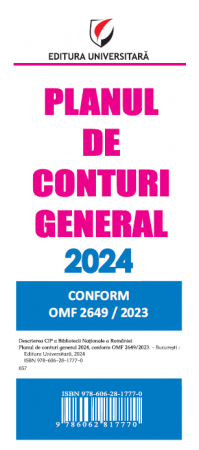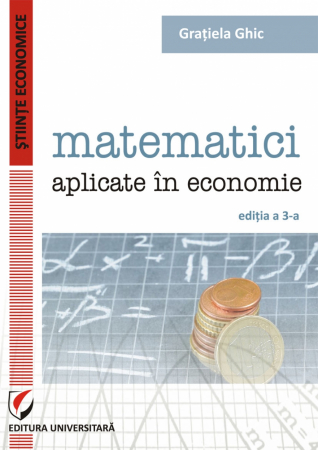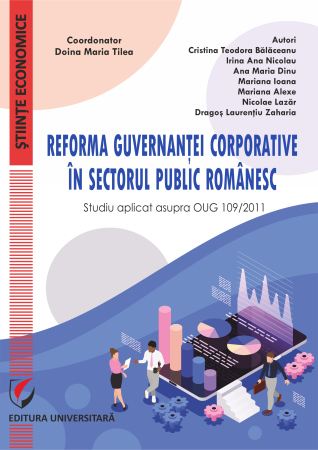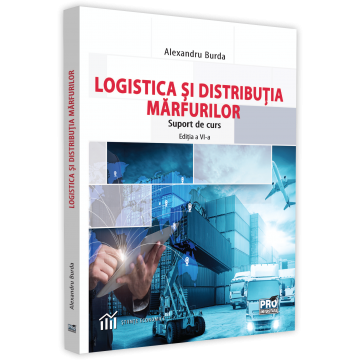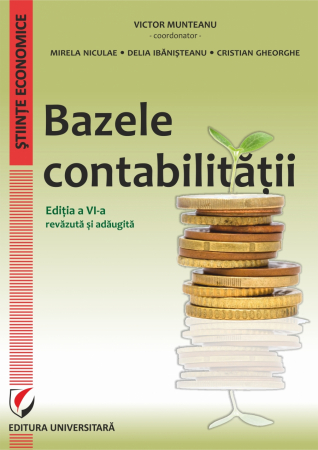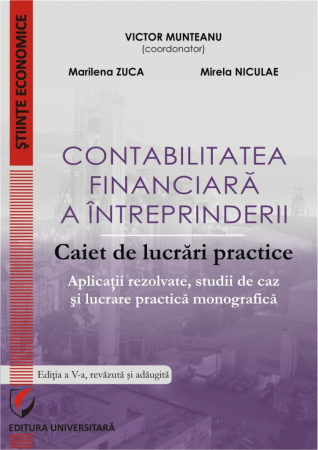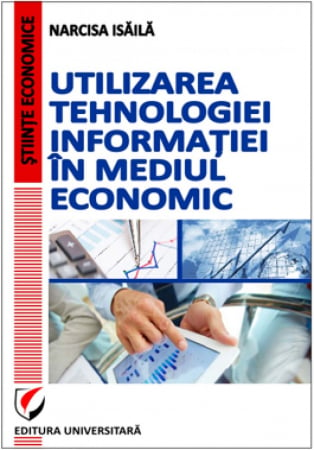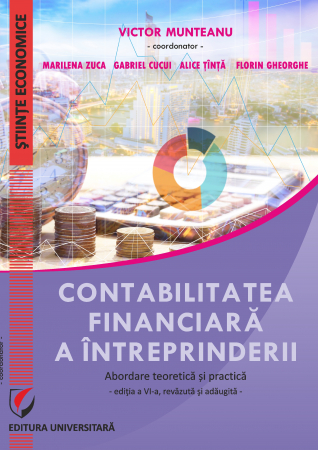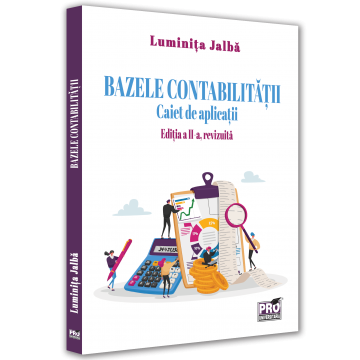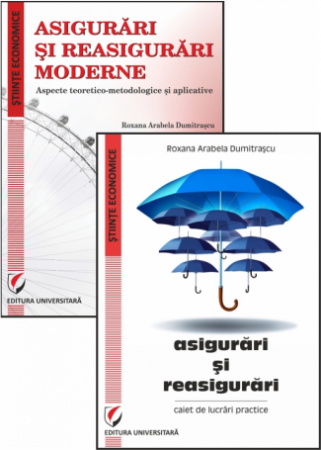ISBN: 978-606-28-1011-5
DOI: 10.5682/9786062810115
Publisher year: 2019
Edition: I
Pages: 172
Publisher: Editura Universitară
Author: Cosmin Imbrisca
- Description
- Authors
- Content
- More details
- Reviews (0)
The book is written in an accessible language and is meant to help anyone interested in finding out what the foundations of exogenous economic growth are and how they can be sustained using available data. To facilitate this process, it includes both the standard theory, the data sources used and the code needed to obtain the results from the book.
At its core, Exogenous Economic Growth An analysis of Solow-Swan models using panel data aims to study the link between classical factors in the economy, such as capital and labor, and how they interact with other modern factors, such as innovation, access to knowledge or technological progress, in order to lead to economic growth. In this sense, the following objectives have been established:
• determining the classical methods of estimating the level of production per inhabitant, in a country, and their empirical validation;
• determining an econometric model that includes human capital, the first of the component elements of intellectual capital, in the function of production;
• studying the innovation process as a source of economic growth and development.
To achieve these goals, the paper was structured in two mutually supportive chapters. Each of them has its own specific theme and objectives. The structure of the chapters is approximately the same, both start with the presentation of the stage of knowledge, followed by the methodology and data used and the conclusions of the chapter.
He is a graduate of the Faculty of Business Administration, teaching in foreign languages, English section, and finished his doctoral program at the Academy of Economic Studies in Bucharest, where he obtained the title of Doctor of Economics in 2016.
In parallel, he is the author of more than 20 scientific articles that have addressed topics such as: intellectual capital, economic growth, foreign direct investment or other topics related to macroeconomics. The novelty of the approach is that it has combined classical methods of econometric analysis with various newer approaches, such as agent-based modeling.
He currently teaches macroeconomics, trade economics or data analysis.
List of abbreviations / 7
Proposed objectives / 8
Chapter I: The role of human capital in the process of economic growth and development / 12
1.1. The economic importance of human capital / 14
1.2. Exogenous production modeling / 17
1.3. Endogenous models of economic growth / 24
1.4. Panel data analysis / 26
1.5. Penn World Table v8.1 / 31
1.6. Modeling economic growth according to capital / 37
1.6.1. Unrestricted econometric model / 37
1.6.2. Restricted econometric model / 41
1.6.3. Convergence check / 43
1.7. Modeling economic growth using human capital / 47
1.7.1. Unrestricted econometric model / 47
1.7.2. Restricted econometric model / 51
1.7.3. Convergence check / 55
1.8. Conclusions / 57
1.9. Code R used in Chapter I / 60
Chapter II: The role of intellectual capital in economic development / 94
2.1. Intellectual Capital - Concept, content, scope / 96
2.2. Microeconomic perspective on intellectual capital / 102
2.3. Macroeconomic approach to intellectual capital / 105
2.3.1. Methodologies used to measure intellectual capital at macroeconomic level / 106
2.3.2. Measuring national intellectual capital / 108
2.3.3. National Intellectual Capital Index 40 (NICI40) / 113
2.4. Intellectual property and industrial property / 116
2.5. Industrial property in Romania / 119
2.6. Innovation as a source of economic growth / 121
2.7. Human capital - a fundamental element of innovation / 126
2.8. Intellectual property / 127
2.9. Econometric modeling of the contribution of research investments to economic growth / 128
2.9.1. Explicit of the production function / 128
2.9.2. The problem of initial data / 137
2.9.3. Research premises and results obtained / 140
2.10. Conclusions / 144
2.11. Code R used in Chapter II / 146
General conclusions / 159
Bibliography / 163
Annex I - List of countries included in each category of those presented in Chapter I / 170
Annex II - List of countries included in each category of those presented in Chapter II / 172
Economic growth is a subject that affects the life of any person and it is impossible to deny its importance in everyday life. The way the economy evolves, the periods of economic growth or decline affect the way we see the future evolution of things and determine many of our decisions. For this reason it is vital to have at least a basic understanding of these phenomena, which is what this book aims to do.
The book is written in an accessible language and is meant to help anyone interested in finding out what the foundations of exogenous economic growth are and how they can be sustained using available data. To facilitate this process, it includes both the standard theory, the data sources used and the code needed to obtain the results from the book.
At its core, Exogenous Economic Growth An analysis of Solow-Swan models using panel data aims to study the link between classical factors in the economy, such as capital and labor, and how they interact with other modern factors, such as innovation, access to knowledge or technological progress, in order to lead to economic growth. In this sense, the following objectives have been established:
• determining the classical methods of estimating the level of production per inhabitant, in a country, and their empirical validation;
• determining an econometric model that includes human capital, the first of the component elements of intellectual capital, in the function of production;
• studying the innovation process as a source of economic growth and development.
To achieve these goals, the paper was structured in two mutually supportive chapters. Each of them has its own specific theme and objectives. The structure of the chapters is approximately the same, both start with the presentation of the stage of knowledge, followed by the methodology and data used and the conclusions of the chapter.
The first chapter of this book contains the classic production functions used at the macroeconomic level. Because the discussion stops on the exogenous or endogenous determined economic models, the main topics studied in this part of the paper are:
• the problem of conditioned convergence;
• the capacity of the model to explain the level of production per capita;
• productivity associated with each factor of production taken into account;
However, due to the fact that researchers do not always significantly favor one of the two approaches, exogenous or endogenous, and the data seem to support one model or the other at different times, there will not be much emphasis on them or on the specific elements of each. Factors that contribute significantly to the economic process are of much greater interest. Two economic models are considered, explicit using Cobb-Douglas functions.
Panel-specific methodology is used to validate the model. These were selected in order to be able to isolate the elements specific to each of the countries considered and to be able to highlight their importance. The data used in this analysis are from the Penn World Table set, version 8.1. This is a longitudinal set of macroeconomic data covering most countries around the world, from 1950 to 2011. These data have been grouped into seven categories. The first three of them were selected so as to overlap with the original data set, used by G. Mankiw et al, because they are repeatedly found in the literature and thus ensures the comparability of results. The other four are proposed based on the division into categories recommended by the World Bank, this decision was taken in order to ensure a certain degree of homogeneity within the same group and to ensure the validity of the conclusions. In order to reduce short-term variations at the macroeconomic level, the data are aggregated for periods of five years each.
From the literature it has been observed that, of all the components of intellectual capital, human capital has the greatest impact on per capita production. In order to avoid confusions caused by the overlap between certain elements of intellectual capital (KI), it is preferable to isolate human capital, as a stand-alone element, from the other components. The results obtained in this chapter are extended in the second chapter in which the organizational capital is added.
In the second chapter of the paper is studied the intellectual capital, as a factor that contributes to the growth and economic development of a country, in order to complete the second objective.
The chapter begins with the current state of knowledge in the field of intellectual capital. The first step is to point out the problems caused by its definition, components and measurement methods, both at the microeconomic and macroeconomic level. To avoid overburdening the term, an open definition of intellectual capital is used: intangible elements that can be used to produce value for a company.
Next, the importance of information for economic development is highlighted. This is achieved by presenting the innovation process as a factor that contributes significantly to the level of per capita production. In this way the third objective of the work is fulfilled. Subsequently, industrial property is presented as a factor that provides a framework that can stimulate the innovation process, even if it does not directly contribute to the production process.
In order to highlight the role of information, an extended form of the economic growth model determined by capital and human capital is proposed, presented in Chapter I, by adding the information investment component, thus covering two of the three components of intellectual capital: human capital. and organizational capital. In order to obtain a more detailed result, this model is explained in two ways, the first one that considers the investments in information at a general level and the second one that divides the investments in public and private.
Sufficient data are not available for many of the countries in the PWT set to be able to extend the testing of the model, so it is necessary to verify it only on a smaller sample, consisting of EU member states. Eurostat and Penn World Table data are used. Countries are grouped according to the innovation capacity of each of them. The methodology used is specific to panel data.
From the results obtained, it is interesting to note that the factors that contribute most to the level of production are human capital and investment in knowledge. It should be added that the sample used is radically different from the first. All countries in this sample would fall into the categories of high-income countries, corresponding to the first sample, and, moreover, many of them would be in the richest of categories. Therefore, the results obtained cannot be generalized beyond the sample used in this chapter.
The paper ends with the annexes associated with the research. As mentioned above, they contain the code used to analyze the data, the detailed results obtained and how the data were segregated. These are included to ensure the transparency and reproducibility of the results obtained in the research process.

6359.png)
![Exogenous Economic Growth. An Analysis of Solow-Swan Models Using Data Panel - Cosmin Imbrisca [1] Exogenous Economic Growth. An Analysis of Solow-Swan Models Using Data Panel - Cosmin Imbrisca [1]](https://gomagcdn.ro/domains/editurauniversitara.ro/files/product/large/cresterea-economica-exogena-o-analiza-a-modelelor-de-tip-solow-swan-folosind-date-panel-73-894381.jpg)
